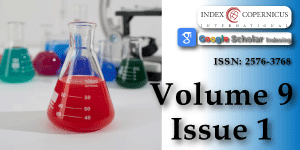Artificial Intelligence (AI) in the Chemical Field: Innovation and Risk Evaluation
Main Article Content
Abstract
This work aims to verify the various uses of AI in chemical settings and the benefits and risks of using this innovative technology.
AI tools make it possible to have a powerful instrument in study or research, as well as in various chemical disciplines.
After a review of some interesting scientific literature related to some interesting uses of AI and the risks involved, the results of an experimental project involved the use of a famous free AI CHATBOT (question and answer).
The articles reported are involved with some benefits of AI use, but also related to the specific risks.
Crucial in this world is that the results provided must be the right ones, without relevant error or the so-called “hallucinations”.
The results of a specific experimental project using a free AI chatbot show errors in providing one.
Chemical structure: The final human control of the AI results can be a useful method to use in a safe way for this technology today.
Article Details
Copyright (c) 2025 Luisetto M, et al.

This work is licensed under a Creative Commons Attribution 4.0 International License.
Hallal K, Hamdan R, Tlais S. Exploring the potential of AI-Chatbots in organic chemistry: An assessment of ChatGPT and Bard. Comput Educ Artif Intell. 2023;5:100170. Available from: https://doi.org/10.1016/j.caeai.2023.100170
Rossettini G, Rodeghiero L, Corradi F, Cook C, Pillastrini P, Turolla A, et al. Comparative accuracy of ChatGPT-4, Microsoft Copilot, and Google Gemini in the Italian entrance test for healthcare sciences degrees: a cross-sectional study. BMC Med Educ. 2024;24:694. Available from: https://doi.org/10.1186/s12909-024-05630-9
Reed SM. Augmented and programmatically optimized LLM prompts reduce chemical hallucinations. J Chem Inf Model. 2025;65(9):4274–80. Available from: https://doi.org/10.1021/acs.jcim.4c02322
Salvagno M, Taccone FS, Gerli AG. Can artificial intelligence help with scientific writing? Crit Care. 2023;27(1):75. Available from: https://doi.org/10.1186/s13054-023-04390-0
Yang HS, Wang F, Greenblatt MB, Huang SX, Zhang Y. AI Chatbots in Clinical Laboratory Medicine: Foundations and Trends. Clin Chem. 2023;69(11):1238–46. Available from: https://doi.org/10.1093/clinchem/hvad106
Mendez JD. Student perceptions of artificial intelligence utility in the introductory chemistry classroom. J Chem Educ. 2024;101:3547–9. Available from: https://doi.org/10.1021/acs.jchemed.4c00075
Pradhan T, Gupta O, Chawla G. The future of ChatGPT in medicinal chemistry: Harnessing AI for accelerated drug discovery. ChemistrySelect. 2024;e202304359. Available from: https://doi.org/10.1002/slct.202304359
Singh AV, Bhardwaj P, Laux P, Pradeep P, Busse M, Luch A, et al. AI and ML-based risk assessment of chemicals: predicting carcinogenic risk from chemical-induced genomic instability. Front Toxicol. 2024;6:1461587. Available from: https://doi.org/10.3389/ftox.2024.1461587
Ugliengo P, Greco C, De Vivo M. Artificial Intelligence in Chemistry. La Chim Ind. 2025;(2). Available from: https://www.soc.chim.it/sites/default/files/chimind/pdf/2025_2_1000_ca.pdf

